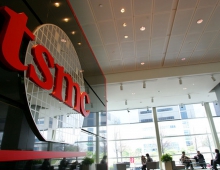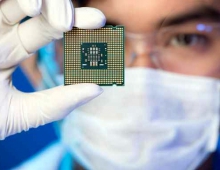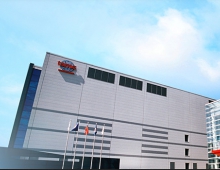
TSMC Raises Forecasts for 2017 Due to 10nm Demand, Outlines 7 and 5nm Roadmap
Taiwan Semiconductor Manufacturing Co. (TSMC) expects demand for its 10nm products to soar this year while its largest customer, Apple, ramps up production of the iPhone X.
"We expect the N10 (TSMC's designation for 10nm) to contribute about 10 percent of our full-year 2017 wafer revenue," TSMC Co-CEO CC Wei said at an event in Taipei to announce the company's third-quarter revenue. The outlook for the world's biggest foundry has improved from three months ago, when the company said it expected 10nm sales to account for 10 percent of its second-half revenue.
Based on the latest forecast, TSMC would log $3.2 billion from sales of 10nm chips in 2017. The company started 10nm production in the second quarter of this year, lagging its largest foundry rival, Samsung, by about four months. TSMC has become the sole supplier of Apple's application processors after snatching the business away from Samsung.
TSMC said its annual sales growth should reach 8.8 percent in 2017, better than the company's previous forecasts.
TSMC is increasing its capital expenditure budget for this year to $10.8 billion from an earlier forecast of $10 billion as the company accelerates its buildup of 7nm capacity. The company expects a fast ramp of 7nm in 2018. For the next few years, TSMC forecast its annual capex budget to be about $10 billion.
The company has transferred 7nm from R&D to manufacturing. TSMC's 7nm process technology, dubbed N7, has entered its production stage since the third quarter of 2017. The N7 will also join TSMC's 16nm FinFET Compact (16FFC) to boost the foundry's revenues generated from the auto electronics sector. The first 7nm chips will be high-end application processors and SoCs for high-performance computing, according to Co-CEO Wei. The company expects more than 50 tapeouts at that node by the end of 2018, he said.
The company will also start risk production of its derivative N7+ during 2018. Compared with the earlier N7, the N7+ will have a 20 percent area reduction and a 10 percent speed improvement. The company will use EUV for production at the N7+ node, according to Wei.
That shift to EUV may present some difficulties for customers migrating from N7 to N7+.
"We are going to use a few layers of EUV in N7+," Wei said. "If you are talking about the N7 product, customers will need to re-tapeout for the N7+ to get the benefits."
The company said it is on track to start volume production of 5nm chips in 2020. Co-CEO Mark Liu disclosed that TSMC's 5nm process technology, dubbed N5, will be ready for risk production in the first half of 2019. He pledged that the company's 5nm products will have the best power efficiency in the industry.
In the meantime, the company continues to defend its approximate 90 percent share in the legacy 28nm node. About 23 percent of TSMC's third-quarter revenue came from 28nm products, and the company had its highest number of tapeouts at that node during the period, according to Wei.





















